2016 News & Events
CSD Scientist Receives Dobson Award from the International Ozone Commission
26 July 2016
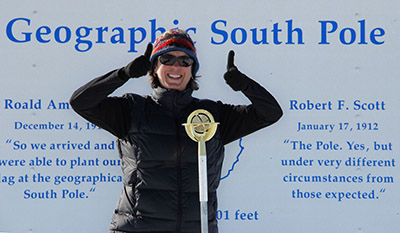
Dr. Birgit Hassler of CSD was selected to receive the Dobson Award from the International Ozone Commission (IO3C). This award is presented to young scientists (those who have received their Ph.D. within the last ten years) for one or more outstanding research paper(s) in atmospheric sciences published or accepted in a refereed journal.
Dr. Hassler was the lead author on "Past changes in the vertical distribution of ozone - Part 1: Measurement techniques, uncertainties and availability" published in Atmospheric Measurement Techniques in May 2014. This paper provides the scientific community with an essential foundation for reliable detection of stratospheric ozone recovery.
Concentrations of chlorofluorocarbons (CFCs) and other ozone-depleting substances (ODS) peaked in the mid-to-late 1990s, causing significant depletion of the stratospheric ozone layer, which protects Earth from damaging ultraviolet radiation. However, in response to the 1987 Montreal Protocol, abundances of most ozone-depleting substances in the atmosphere have dropped and the ozone layer is expected to recover.
Now, atmospheric scientists are working to document the recovery of the stratospheric ozone layer and understand the evolution of stratospheric ozone in the presence of rising greenhouse gases. This requires a high-quality set of worldwide measurements and analysis of how ozone changes with geography, vertical height, and time.
In preparation for the 2014 Scientific Assessment of Ozone Depletion, the SPARC/IO3C/IGACO-O3 /NDACC (SI2N) Initiative was developed to guide research into changes in the global ozone profile distribution and to address various problems in instrumentation and measurement uncertainties. This work is important because during the 2010 assessment, uncertainties and inconsistencies in the available data prevented scientists from reaching strong conclusions about ozone recovery.
Dr. Hassler's paper is the first in a series of three papers from the SI2N Initiative and sought to describe the available ozone data sets, measurement methods, and uncertainties. The publication provides an overview of well-established ozone records (going back to 1960) and offers information on recently reprocessed and newly available data sources. Dr. Hassler reviews long-term ozone profile data derived from five of the most common ground-based systems and nineteen satellite-based instruments. Her paper consolidates the most commonly used ozone profile data for easy access and comparison.
While all three overview papers were important in providing background information and guidance for future ozone profile trend analysis, there is still a significant need for high-quality stratospheric ozone measurements. Only with highly stable and accurate measurements will it be possible to attribute future ozone changes and verify recovery.
The IO3C helps organize the study of ozone around the world, including ground-based and satellite measurement programs and analyses of the atmospheric chemistry and dynamical processes affecting ozone. The organization presents this award to Dr. Hassler during the Quadrennial Ozone Symposium (QOS) 2016 on 4-9 September in Edinburgh.
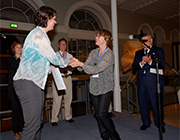
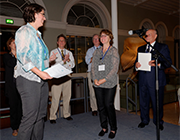
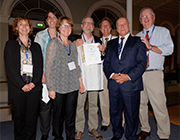
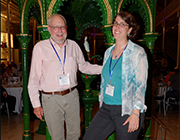
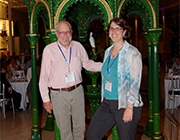
Hassler, B., Petropavlovskikh, I., Staehelin, J., August, T., Bhartia, P. K., Clerbaux, C., Degenstein, D., Maziére, M. De, Dinelli, B. M., Dudhia, A., Dufour, G., Frith, S. M., Froidevaux, L., Godin-Beekmann, S., Granville, J., Harris, N. R. P., Hoppel, K., Hubert, D., Kasai, Y., Kurylo, M. J., Kyrölä, E., Lambert, J.-C., Levelt, P. F., McElroy, C. T., McPeters, R. D., Munro, R., Nakajima, H., Parrish, A., Raspollini, P., Remsberg, E. E., Rosenlof, K. H., Rozanov, A., Sano, T., Sasano, Y., Shiotani, M., Smit, H. G. J., Stiller, G., Tamminen, J., Tarasick, D. W., Urban, J., van der A, R. J., Veefkind, J. P., Vigouroux, C., von Clarmann, T., von Savigny, C., Walker, K. A., Weber, M., Wild, J., and Zawodny, J. M, Past changes in the vertical distribution of ozone - Part 1: Measurement techniques, uncertainties and availability, Atmospheric Measurement Techniques, doi:10.5194/amt-7-1395-2014, 2014.
Abstract
Peak stratospheric chlorofluorocarbon (CFC) and other ozone depleting substance (ODS) concentrations were reached in the mid- to late 1990s. Detection and attribution of the expected recovery of the stratospheric ozone layer in an atmosphere with reduced ODSs as well as efforts to understand the evolution of stratospheric ozone in the presence of increasing greenhouse gases are key current research topics. These require a critical examination of the ozone changes with an accurate knowledge of the spatial (geographical and vertical) and temporal ozone response. For such an examination, it is vital that the quality of the measurements used be as high as possible and measurement uncertainties well quantified.
In preparation for the 2014 United Nations Environment Programme (UNEP)/World Meteorological Organization (WMO) Scientific Assessment of Ozone Depletion, the SPARC/IO3C/IGACO-O3/NDACC (SI2N) Initiative was designed to study and document changes in the global ozone profile distribution. This requires assessing long-term ozone profile data sets in regards to measurement stability and uncertainty characteristics. The ultimate goal is to establish suitability for estimating long-term ozone trends to contribute to ozone recovery studies. Some of the data sets have been improved as part of this initiative with updated versions now available.
This summary presents an overview of stratospheric ozone profile measurement data sets (ground and satellite based) available for ozone recovery studies. Here we document measurement techniques, spatial and temporal coverage, vertical resolution, native units and measurement uncertainties. In addition, the latest data versions are briefly described (including data version updates as well as detailing multiple retrievals when available for a given satellite instrument). Archive location information for each data set is also given.